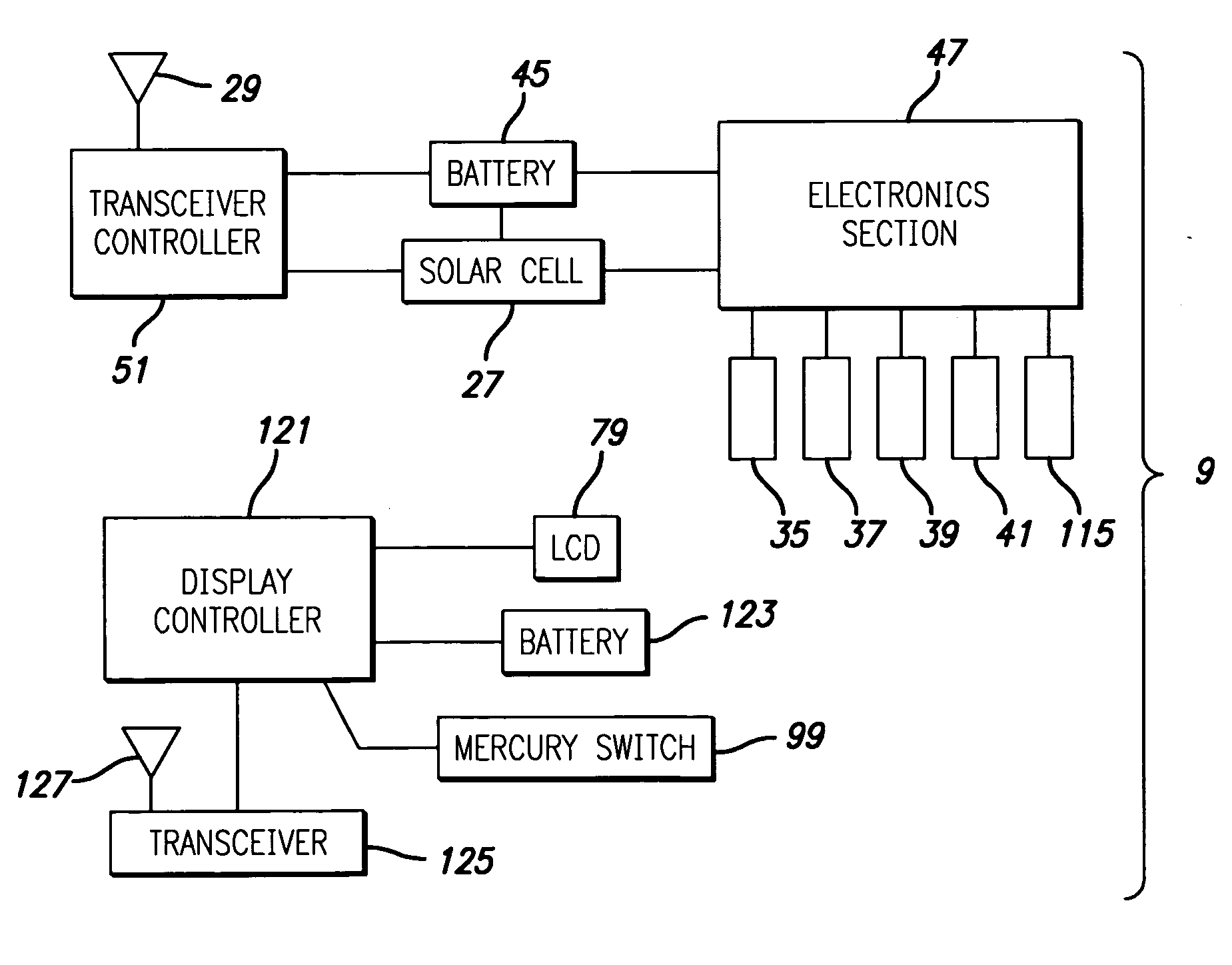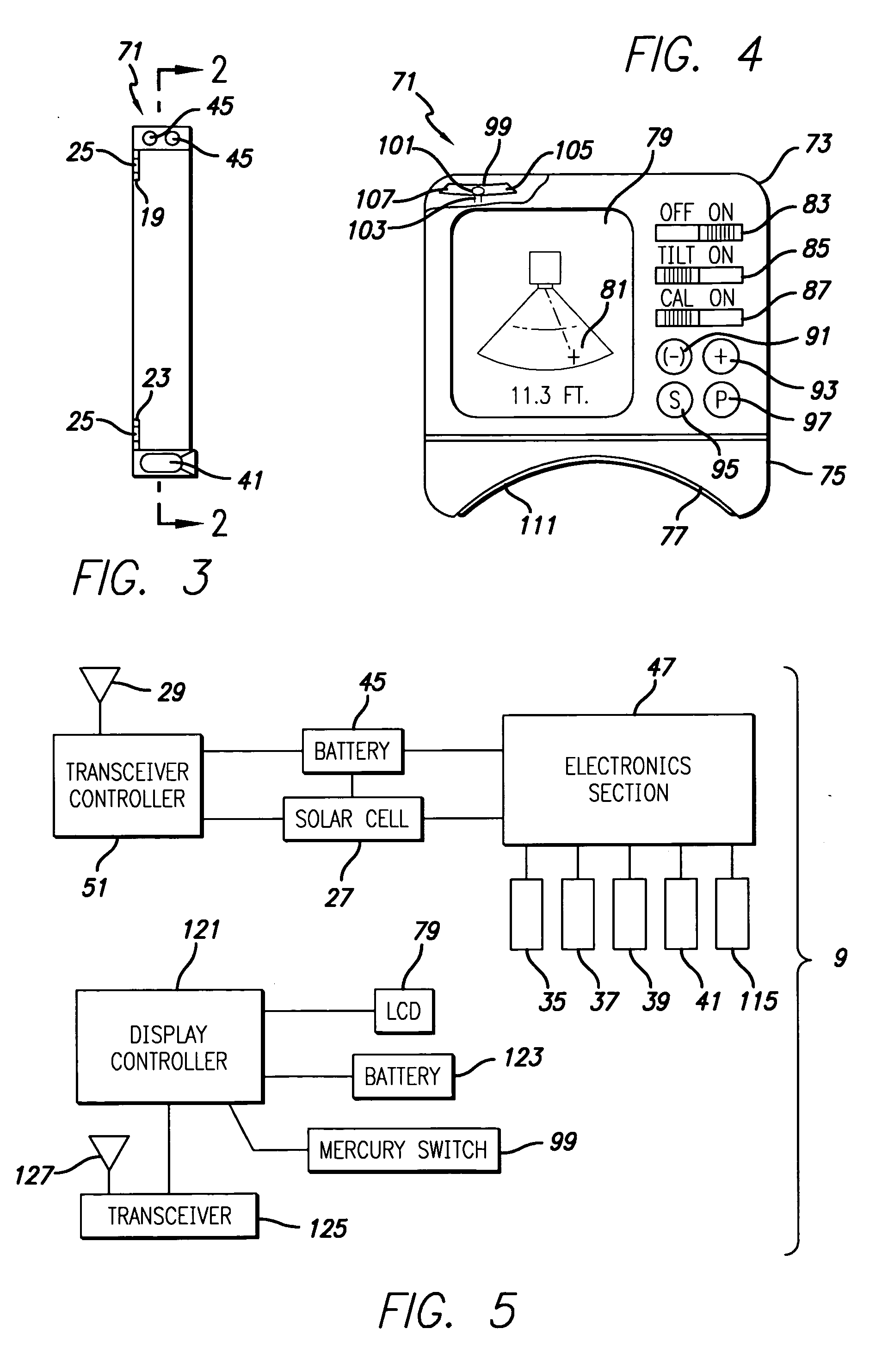Vehicle reverse warning and distance measurement system
a distance measurement and vehicle technology, applied in vehicle position/course/altitude control, process and machine control, instruments, etc., can solve the problems of increasing automobile downtime, adding problems to automobile ownership, and increasing automobile downtime, so as to facilitate the use of the frame structure, facilitate the use of the structure, and the effect of stable fixed structur
- Summary
- Abstract
- Description
- Claims
- Application Information
AI Technical Summary
Benefits of technology
Problems solved by technology
Method used
Image
Examples
Embodiment Construction
[0026] In general, automobile reverse warning and distance measurement system 9 is shown within a frame housing structure 11 is provided which can fit adjacent a vehicle's license plate which is shown in background as having the license number 1DAKA. The format shown is an American Automobile license plate format having a dimension of about six inches high by about twelve inches wide. Other formats can be used, including the European standard of a much wider and less high license plate shape.
[0027] The important element to note in FIG. 1, as well as the other drawings, is the accommodation of the space into which an automobile license plate 13, and thus the frame housing structure 11 must fit. In extreme cases, and for some vehicles, the license plate 13 fits into an area restricted on all four sides. In other cases the license plate 13 can have an upper restriction only or a lower restriction only. As a result, to insure that the frame housing structure 11 can be used in all confi...
PUM
 Login to View More
Login to View More Abstract
Description
Claims
Application Information
 Login to View More
Login to View More - R&D
- Intellectual Property
- Life Sciences
- Materials
- Tech Scout
- Unparalleled Data Quality
- Higher Quality Content
- 60% Fewer Hallucinations
Browse by: Latest US Patents, China's latest patents, Technical Efficacy Thesaurus, Application Domain, Technology Topic, Popular Technical Reports.
© 2025 PatSnap. All rights reserved.Legal|Privacy policy|Modern Slavery Act Transparency Statement|Sitemap|About US| Contact US: help@patsnap.com



